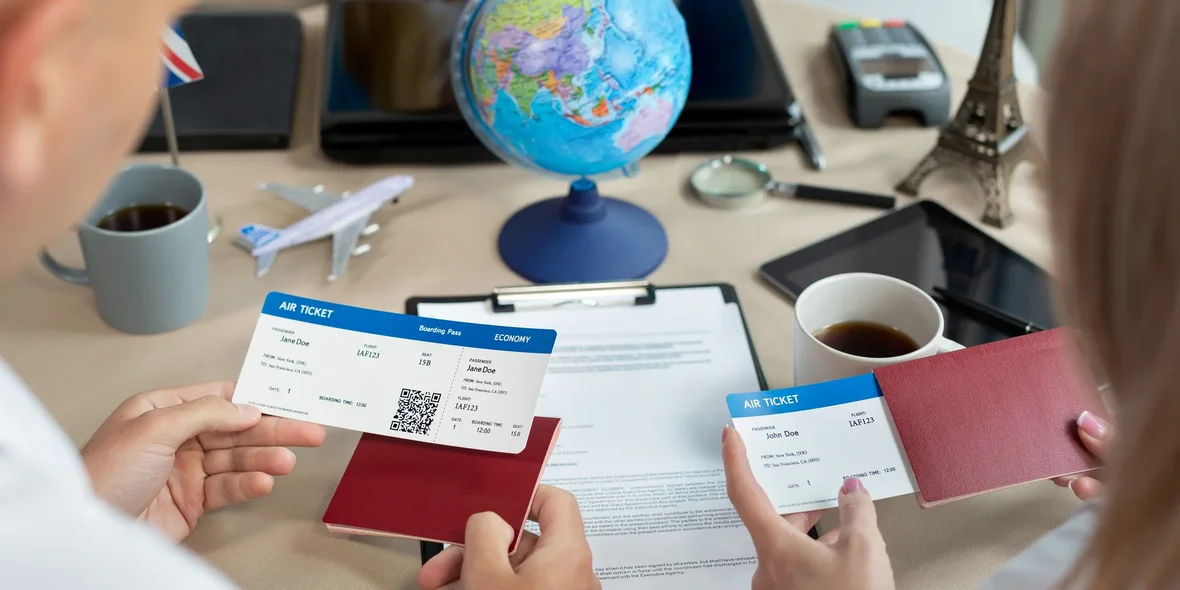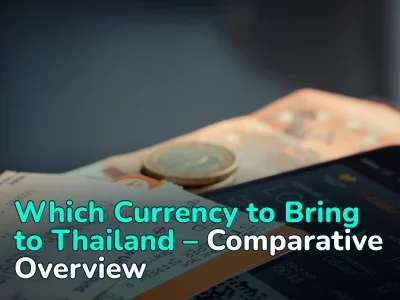
I Wish I’d Known This Sooner: Top Hacks for Saving on Flights
Often, the most expensive part of a trip is the flight, especially for long-haul destinations. A flight to New York, Tokyo, or Sydney can cost anywhere from $500 to $2000, depending on your departure point. But distance isn’t the only factor that drives up ticket prices — when you purchase the ticket and how many days in advance you book also matter. However, a high price shouldn’t discourage you from traveling, because there are several tried-and-true ways to lower the ticket price (even if not always dramatically).
In this article, we’ve gathered the main ways to save on flights, as well as a bunch of hacks on the same topic, critically analyzing them, because not all of them turned out to be effective.
Main Principles of Saving: What You Need to Understand
To get cheaper flights, you need to understand how ticket prices are formed and then see where you can cut costs. There are several main factors involved, and we’ll go through them step by step.
Seasonality and Departure Dates
Seasonality and the dates of your flight have a big impact on the price. Why? Simple — demand. For example, flights in the middle of the week (Tuesday, Wednesday) or during the off-season (between high and low season, like April or October) tend to be cheaper. When it comes to days, it’s easy to understand (people work during the week, so demand is lower than right before the weekend), but seasonality deserves special attention. Always keep it in mind, because if you’ve picked a specific date for your arrival in a country, and there’s a national holiday during that time, the price will be 1.5 or even 2 times higher.
During the off-season, ticket prices will be higher than in the low season but lower than in the high season. This period is actually the best time to fly because, in places like the Mediterranean, the weather stays warm and the sea is still pleasant, but tourist crowds have started to thin out. In the low season, you may face closed hotels, shops, and unpleasant (sometimes stormy) weather — but on the bright side, you’ll save money.
If you absolutely need to fly during peak or high-demand times, consider choosing alternative airports. The more crowded an airport is, the more expensive flights to and from it tend to be. In contrast, flights to the same destination from a less busy airport might be slightly cheaper. For example, in Lithuania, there are three main airports — in Kaunas, Palanga, and Vilnius. You can fly to the UK from any of them, but a ticket from Kaunas to London costs €55, from Palanga it’s €30, and from Vilnius, it’s only €15. The same principle applies to the airport you choose to fly into the country.
Early Booking and Flash Deals
Major airlines (Lufthansa, Turkish Airlines) offer the lowest prices when you book 2–6 months in advance. The same goes for special deals, which are announced well in advance (sometimes six months or more ahead of time). Low-cost carriers, however, have a different strategy and offer the best deals 2–4 weeks before departure, with prices gradually rising as the departure date nears.
It’s not about planning ahead — it’s simply that airlines want to fill seats in advance. That’s why they offer significant discounts to get the flight partially filled in the first few months. Low-cost carriers are designed for people who fly frequently for short trips.
Accounting for Hidden Fees
It’s not entirely accurate to call extra costs “hidden” because no one is keeping them a secret, but they’re not always advertised. The thing is, extra services usually come with additional charges. For example, a flight from Vilnius to London with Ryanair costs €15, but that’s just the basic fare. If you want to reserve a seat, get priority boarding for the overhead bin, and add 10 kg of extra luggage, you’ll need to pay an additional €29, and that’s not the maximum. The total surcharge can be as high as €100. You might think that’s a rip-off, but no — extra services are an important source of income for airlines, and for low-cost carriers, they’re crucial.
Top Hacks for Saving on Flights
Now that we’ve covered the basics, let’s dive into the hacks. Most of them are simple and are more like useful tips, because no airline is going to give you a free ticket or one at half price, no matter how hard you try.
Price comparison through aggregators. Platforms like Skyscanner or Google Flights gather offers from multiple airlines, not just one. However, there are a couple of things to keep in mind. First, they don’t do this for free — they charge a markup when you book through their website. Second, they don’t always show the final price, which may include extra fees (for example, baggage charges with low-cost carriers). It’s better to compare data from several aggregators on your own.
Email newsletters aren’t always the enemy. Airlines often run sales and announce them through email newsletters or social media. While newsletters are usually full of useless advertising, airlines sometimes send out discount codes for new destinations through them. It’s important to double-check the terms of the discount, as it may not apply to taxes and fees, which could add 30% to the ticket cost.
Fly with low-cost carriers. They offer low base fares, and if you avoid extra options, you can save a lot. However, be aware that violating the rules (like exceeding baggage limits or checking in at the airport) can result in fines of $30–70. Plus, low-cost carriers often fly to secondary airports in major countries, so you’ll need to budget for additional transfer costs.
Choose flights with layovers. Flights with layovers are usually cheaper than direct ones, especially for long-haul routes. Yes, layovers can be inconvenient and may last several hours, but on the bright side, while you’re waiting for your connecting flight, you can explore the area and wander around the city. However, it’s important to know that short layovers between flights can be risky. If the flight you’re on gets delayed and you miss your connecting flight, it’s not guaranteed that the airline will compensate you.
Earning miles and bonuses. Frequent flyer programs allow you to earn miles for flights, which can be redeemed for tickets or discounts. Some airlines also partner with banks to offer branded credit cards, which often provide discounts or allow you to use bonuses to pay for tickets. The downside is that bonuses accumulate slowly, especially if you don’t fly frequently. The same goes for cashback cards that you can use to pay for flights.
Flight ticket, or there and back again. For major airlines (including low-cost carriers), round-trip tickets are often cheaper than two one-way tickets. However, savings aren’t guaranteed, and if there are schedule changes, you might have to pay extra to change or cancel your ticket (unless it’s covered by the basic fare).
Ticket price errors. Occasionally, technical glitches on airline or aggregator websites lead to tickets being listed at suspiciously low prices. For example, in 2024, Qatar Airways accidentally sold business class tickets from Moscow to Doha for $300 instead of $1500. You can grab such tickets, but chances are the airline will cancel them unless they’re willing to risk reputational damage.
Hacks That Don’t Work
There are many so-called hacks online that sometimes seem like the latest conspiracy theories. The most fitting example is the idea that if you browse in incognito mode, the prices will be lower. “Experts” claim that airline and aggregator websites track your browsing history through cookies, and upon revisiting their site, ticket prices will be higher.
Major aggregators have repeatedly debunked the impact of cookies on the prices displayed, and enthusiasts have run multiple tests on the internet, ultimately finding that the price remained the same.
Other myths:
- Buying on a certain day of the week is always cheaper. There’s a myth that there’s a magical day of the week, usually Tuesday or Wednesday, when airlines lower their ticket prices. But this isn’t true because prices are driven by demand. If interest suddenly spikes in the middle of the week, ticket prices will increase accordingly.
- Wait until the last minute. The idea that if you wait until the last week or day before departure, airlines will slash prices to fill the remaining seats is false. Demand increases on popular routes as the departure date nears, and airlines raise prices, especially in economy class. Last-minute deals are rare and usually only happen on charter flights or unpopular routes.
- One aggregator always offers the lowest prices. This is a statement often found in aggregator ads. But it’s only partially true. Yes, prices on aggregators can sometimes be lower due to exclusive discounts and website-specific features. But in reality, the same flight may cost differently on various platforms, and even a direct search on the airline’s own website could be cheaper since you won’t have to pay the aggregator’s commission.
What’s the Verdict?
Yes, flights can be expensive, but the price shouldn’t stop you from traveling. Extra time spent on layovers, flying in the off-season, and choosing less crowded airports can save you a significant amount, especially for long-haul flights to remote islands.
Author
I write informative articles about real estate, investments, job opportunities, taxes, etc.






















